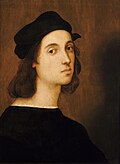This article needs additional citations for verification .(February 2016) |


Year 1483 ( MCDLXXXIII ) was a common year starting on Wednesday of the Julian calendar.
Contents
- Events
- January–March
- April–June
- July–September
- October–December
- Date unknown
- Births
- Deaths
- References
| Years |
|---|
| Millennium |
| 2nd millennium |
| Centuries |
| Decades |
| Years |
| 1483 by topic |
|---|
| Arts and science |
| Leaders |
| Birth and death categories |
| Births – Deaths |
| Establishments and disestablishments categories |
| Establishments – Disestablishments |
| Art and literature |
| 1483 in poetry |

